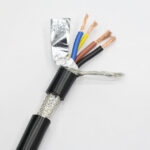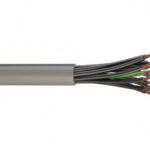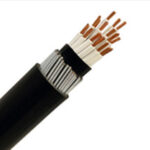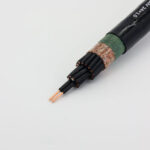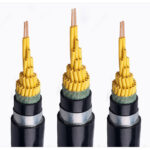New guidelines address growing confusion over proper wire sizing for medium-duty electrical circuits amid surge in home improvement projects
March 18, 2025 - With home workshops, electric dryers, and air conditioning units becoming increasingly common in American households, electrical safety organizations are emphasizing proper wire sizing for 30-amp circuits. Recent clarifications from electrical industry experts have provided definitive answers to the frequently asked question: 'what size wire for 30 amp' installations, as improper sizing continues to be a leading cause of residential electrical issues.
Growing Demand for 30-Amp Circuits Drives Safety Education
The past three years have seen a 35% increase in 30-amp circuit installations across residential properties, driven primarily by home workshop setups, RV connections, and high-efficiency appliances. This surge has led to increased confusion among both homeowners and some contractors about proper wire gauge selection.
'The most common question we receive is 'what gauge wire for 30 amp' circuits,' reports Lisa Anderson, a master electrician with the International Brotherhood of Electrical Workers. 'Getting this wrong isn't just a code violation – it's a serious safety hazard that can lead to fires, equipment damage, and personal injury.'
The National Fire Protection Association reports that electrical failures account for approximately 13% of home fires annually, with improper wire sizing being a significant contributing factor in medium-amperage circuits.
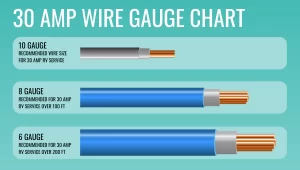
what gauge wire for 30 amp
Industry Standards Provide Clear Wire Sizing Requirements
According to current National Electrical Code (NEC) standards, the correct wire size for 30 amp circuits is 10 AWG copper wire for most residential applications. However, many professionals recommend 8 AWG copper wire to provide additional safety margin and better performance.
For installations using aluminum wiring, 8 AWG aluminum wire is the standard choice, with an ampacity rating of 40 amps at 75°C, providing adequate capacity for 30-amp circuit protection.
'When people ask what size wire for 30 amp installations, we always start with 10 AWG copper as the minimum requirement,' explains electrical contractor Maria Rodriguez. 'But for most applications, especially those involving motors or inductive loads, 8 AWG copper provides better long-term reliability.'
Application-Specific Wire Sizing Considerations
The question of what gauge wire for 30 amp circuits becomes more complex when considering specific applications and installation conditions. Different uses require different approaches to wire sizing:
Common 30-Amp Applications:
- Electric dryers (typically 240V)
- Central air conditioning units
- Electric water heaters
- RV power connections
- Workshop welders and heavy equipment
- Pool and spa electrical systems
Wire Sizing by Application:
Standard Residential Dryer Circuits: Most electric dryers require 30-amp, 240-volt circuits. According to AWG wire sizing charts, 10 gauge wire is the minimum recommended size for 30 amp connections, safely handling the electrical load.
Workshop and Welder Installations: For 220V welders and workshop equipment, any 30-amp circuit must use a minimum of 10 AWG copper or 8 AWG aluminum wire to meet NEC requirements.
HVAC Applications: Air conditioning units often require 30-amp circuits, with wire sizing depending on the unit's specific power requirements and installation distance from the electrical panel.
Distance and Environmental Factors Affect Wire Selection
Understanding what size wire for 30 amp circuits involves more than just amperage calculations. Several factors influence the final wire gauge selection:
Critical Sizing Factors:
- Circuit length: Runs over 75 feet may require larger gauge wire
- Temperature rating: Ambient temperature affects wire ampacity
- Installation method: Conduit vs. direct burial affects heat dissipation
- Voltage drop: Longer circuits require compensation for power loss
- Load type: Motor loads vs. resistive loads have different requirements
'Many people don't realize that what gauge wire for 30 amp circuits isn't just about the 30 amps,' notes electrical engineer Dr. James Patterson. 'A 30-amp dryer circuit running 100 feet might need 8 AWG copper instead of 10 AWG to maintain proper voltage levels.'
Regional Code Variations Create Installation Challenges
While national electrical codes provide baseline requirements, regional amendments can significantly affect wire sizing decisions. Some jurisdictions have stricter requirements that influence the answer to 'what size wire for 30 amp' installations.
Regional Considerations:
- Cold Climate Requirements: Some northern states require larger wire gauges for outdoor installations
- High Temperature Zones: Desert regions may mandate temperature derating
- Seismic Zones: Earthquake-prone areas have specific conduit and wire requirements
- Coastal Areas: Salt air exposure affects wire type and sizing decisions
'What gauge wire for 30 amp circuits can have different answers depending on your zip code,' explains code consultant Robert Chen. 'We always recommend checking local amendments before making final wire sizing decisions.'
Cost Analysis Drives Material Selection Decisions
The choice between different wire gauges and materials often comes down to cost-benefit analysis, with significant price differences between options.
Current Market Pricing (per 100 feet):
- 10 AWG copper wire: $180-$220
- 8 AWG copper wire: $280-$340
- 8 AWG aluminum wire: $120-$160
- Installation labor: $65-$95 per hour (regional variation)
'When customers ask what size wire for 30 amp installations, cost is usually their second concern after safety,' observes electrical supply retailer Tom Williams. 'We show them that spending an extra $100 on 8 AWG instead of 10 AWG copper often pays for itself in improved performance and future flexibility.'
The total installation cost difference between 10 AWG and 8 AWG copper typically ranges from $150-$300 for average residential circuits, making the upgrade economically attractive for many applications.
Safety Experts Warn Against DIY High-Amperage Work
Despite readily available information about what gauge wire for 30 amp circuits, electrical safety organizations strongly discourage DIY installation of medium and high-amperage circuits.
Recent data from the Electrical Safety Foundation International shows concerning trends:
- 35% increase in DIY electrical injuries involving 30+ amp circuits
- $2.8 billion in annual property damage from improper electrical installations
- 42% of electrical fires traced to amateur installations or modifications
'Understanding what size wire for 30 amp circuits is valuable knowledge,' states electrical safety advocate Dr. Patricia Williams. 'But proper installation involves load calculations, proper grounding, conduit sizing, and connection techniques that require professional expertise.'
Technology Advances Improve Wire Performance Standards
Recent developments in wire manufacturing have introduced improved materials and designs specifically optimized for 30-amp applications. These advances are changing how professionals approach the question of what gauge wire for 30 amp installations.
Modern Wire Improvements:
- Enhanced Insulation: THWN-2 and XHHW-2 ratings provide superior temperature and moisture resistance
- Improved Conductivity: Advanced copper alloys offer better performance in the same gauge
- Better Flexibility: Stranded configurations improve installation in tight spaces
- Corrosion Resistance: Special coatings extend wire life in harsh environments
'When specifying what size wire for 30 amp applications, we now consider not just gauge but also insulation type and conductor design,' notes electrical contractor Susan Park. 'Modern 10 AWG THWN-2 copper often outperforms older 8 AWG wire in many applications.'
Load Calculation Methods Ensure Proper Sizing
Professional electricians use sophisticated methods to determine what gauge wire for 30 amp circuits, going beyond simple amperage matching to ensure optimal performance and safety.
Professional Sizing Process:
- Load Analysis: Calculate actual vs. rated amperage requirements
- Diversity Factors: Account for simultaneous use patterns
- Temperature Derating: Adjust for installation environment
- Voltage Drop Calculations: Ensure adequate voltage at load
- Future Expansion: Consider potential load increases
'The question 'what size wire for 30 amp' circuits requires engineering analysis, not just code lookup,' explains electrical engineer Dr. Michael Foster. 'We calculate actual loads, consider operating conditions, and size wire for optimal long-term performance.'
Smart Home Integration Affects Wire Sizing Decisions
The growing integration of smart home technology is influencing how professionals approach 30-amp circuit design and wire sizing. Smart monitoring systems and automated controls place new demands on electrical circuits.
Smart Home Considerations:
- Power Quality: Smart devices are sensitive to voltage fluctuations
- Monitoring Integration: Some systems require additional conductors
- Remote Control: Smart breakers may have different requirements
- Energy Management: Load balancing systems affect sizing calculations
'Modern smart homes are changing how we answer 'what gauge wire for 30 amp' installations,' observes home automation specialist Jennifer Davis. 'We're seeing requests for oversized wire to accommodate future smart technology integration.'
Environmental Impact Drives Sustainable Choices
Growing environmental awareness is influencing wire selection decisions, with many contractors and homeowners considering the lifecycle impact of their choices when determining what size wire for 30 amp circuits.
Sustainability Factors:
- Copper Recycling: Higher initial cost but better recyclability
- Energy Efficiency: Larger wire gauges reduce energy losses
- Longevity: Quality wire reduces replacement frequency
- Manufacturing Impact: Some wire types have lower production emissions
'Customers increasingly ask about the environmental impact when we discuss what gauge wire for 30 amp installations,' reports green building contractor Mark Anderson. 'Investing in larger gauge copper wire often aligns with both performance and sustainability goals.'
Future Trends in 30-Amp Circuit Design
Industry experts predict significant changes in how 30-amp circuits are designed and installed, driven by evolving technology and changing electrical demands.
Emerging Trends:
- Smart Circuit Protection: Advanced breakers with communication capabilities
- Modular Wiring Systems: Plug-and-play connections for easier upgrades
- Hybrid AC/DC Systems: Integration with solar and battery storage
- Predictive Maintenance: Sensors that monitor wire performance over time
'The question of what size wire for 30 amp circuits will evolve as electrical systems become smarter and more integrated,' predicts electrical industry analyst Dr. Sarah Kim. 'We're moving toward systems that can adapt and optimize themselves based on actual usage patterns.'
Professional Installation Best Practices
Industry professionals have developed comprehensive best practices for 30-amp circuit installations that go far beyond simple wire sizing considerations.
Installation Standards:
- Load Center Evaluation: Ensure adequate panel capacity
- Proper Grounding: GFCI and AFCI protection where required
- Quality Connections: Use appropriate terminals and techniques
- Documentation: Maintain detailed installation records
- Inspection Scheduling: Coordinate with local electrical inspectors
'Knowing what gauge wire for 30 amp circuits is just the starting point,' emphasizes master electrician Robert Taylor. 'Professional installation ensures safety, code compliance, and optimal performance for decades of service.'
Consumer Education and Safety Awareness
Electrical industry organizations are increasing their focus on consumer education about proper wire sizing and the importance of professional installation for medium-amperage circuits.
Key Educational Messages:
- Understanding basic electrical safety principles
- Recognizing when professional help is required
- Importance of permits and inspections
- Long-term cost benefits of proper installation
- Warning signs of electrical problems
'We want homeowners to understand what size wire for 30 amp circuits, but more importantly, to understand when they need professional help,' states electrical safety educator Maria Santos. 'Knowledge should lead to better decisions, not dangerous DIY attempts.'
Economic Impact of Proper Wire Sizing
The economic implications of proper wire sizing extend beyond initial installation costs, affecting long-term energy efficiency, maintenance costs, and property values.
Financial Considerations:
- Energy Efficiency: Properly sized wire reduces power losses
- Equipment Longevity: Correct voltage levels extend appliance life
- Insurance Compliance: Proper installation affects coverage
- Resale Value: Quality electrical work adds property value
- Maintenance Costs: Proper sizing reduces future problems
'Understanding what gauge wire for 30 amp circuits helps homeowners make informed investment decisions,' notes residential appraiser David Foster. 'Quality electrical work is one of the best investments for long-term property value.'
Conclusion: Professional Standards Ensure Safety and Performance
As 30-amp circuits become increasingly common in residential applications, understanding proper wire sizing becomes more important for homeowners, contractors, and electrical professionals. While the basic answer to 'what size wire for 30 amp' circuits is well-established in electrical codes, proper installation requires consideration of numerous factors beyond simple amperage matching.
The electrical industry consensus emphasizes that knowledge about what gauge wire for 30 amp circuits should inform better communication with electrical professionals rather than encourage DIY installation attempts. As electrical systems become more complex and integrated with smart home technology, professional expertise becomes increasingly valuable for ensuring safe, efficient, and code-compliant installations.
'The question 'what size wire for 30 amp' installations will always be important,' concludes electrical safety expert Dr. Jennifer Williams. 'But the answer must consider the complete installation context – application requirements, environmental conditions, local codes, and long-term performance goals. Professional installation ensures all these factors are properly addressed.'
For homeowners planning 30-amp circuit installations, the key is working with qualified electrical professionals who understand not just wire sizing requirements, but the complete system design needed for safe, reliable electrical service.

